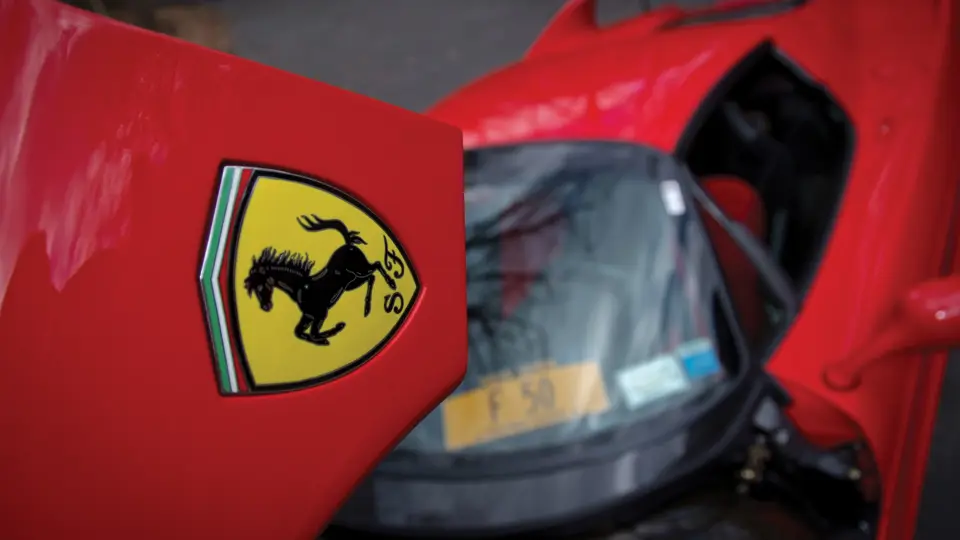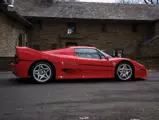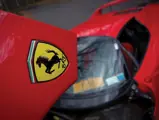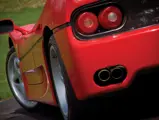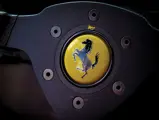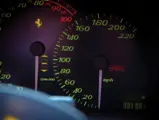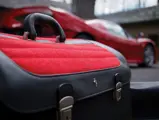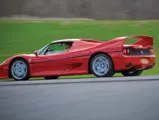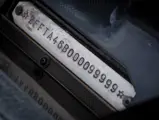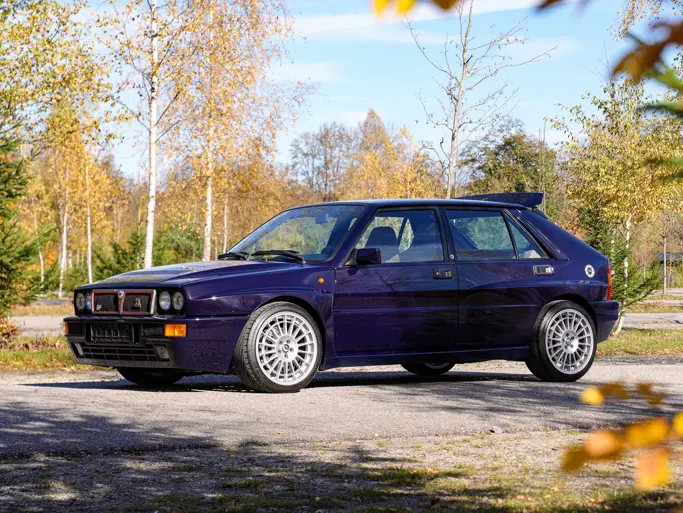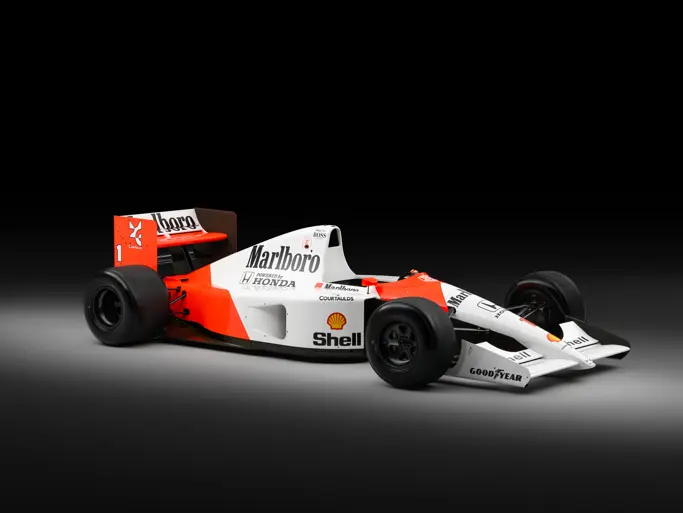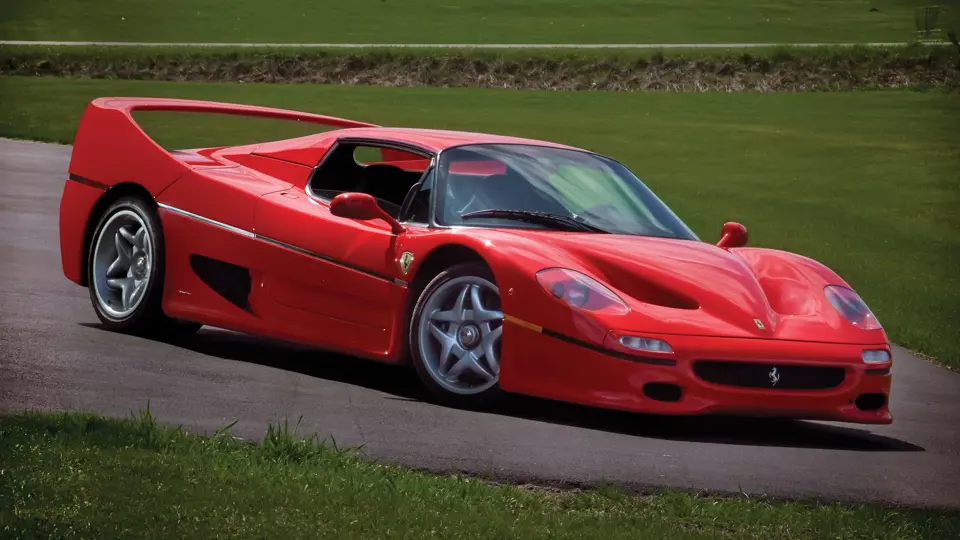
1995 Ferrari F50
{{lr.item.text}}
$1,677,500 USD | Sold
{{bidding.lot.reserveStatusFormatted}}
- The original show car used to introduce the F50 at Geneva in 1995
- The last Ferrari with a five-digit chassis number
- Used for F50 promotional materials
- Delivered new to legendary Ferrari dealer Jacques Swaters
- Carefully maintained, with less than 1,100 miles
520 bhp, 4,698 cc V-12 engine with Bosch Motronic 2.7 engine management, six-speed manual transmission, four-wheel independent suspension with coil springs and unequal length wishbones, and four-wheel hydraulic disc brakes. Wheelbase: 101.6 in.
“Fifty years of racing, fifty years of winning, fifty years of hard work.” With these words, Luca di Montezemolo introduced the stunning Ferrari F50 on March 6, 1995, at the Auto Museum in Geneva, Switzerland, in conjunction with the city’s 63rd annual auto show. Niki Lauda was on the list of prominent guests, which included various Ferrari dealers, distributors, clients, and friends.
Piero Lardi Ferrari and Sergio Pininfarina removed the car cover to officially present the new car to the world. The F40 may have been a hard act to follow, but Ferrari’s designers exceeded themselves with the F50, which replaced its predecessor’s small capacity, twin-turbo V-8 powerplant with a more traditional Ferrari V-12 layout.
Using technology derived from Ferrari’s Formula One V-12, the new, naturally aspirated 4.7-liter engine featured a 65-degree angle between the two cylinder banks and four overhead camshafts with three intake and two exhaust valves per cylinder. Its compression ratio was 11.3:1, and a Bosch Motronic 2.7 unit controlled the fuel injection and ignition, while a throttle valve driven by the ECU allowed for two exhaust lengths, with one tuned to achieve the greatest torque and the other for better top-end performance, reducing the backpressure on the exhaust. In fact, the self-diagnostic system even adhered to California’s notoriously strict exhaust emission standards.
The crankcase itself was made of high-strength nodular cast iron, while Nikasil-coated liners and the connecting rods were made of titanium. Dry-sump oiling was used with three scavenge pumps and one supply pump. All told, maximum output reached 520 brake horsepower at 8,500 rpm and peak torque was 347 foot-pounds at 6,500 rpm. The 436-pound engine itself was durable and capable of reaching over 10,000 rpm.
A six-speed longitudinal gearbox, complete with a limited-slip differential, was fitted behind the engine, between which was mounted the oil tank for the dry-sump engine lubrication system—all reminiscent of the layout used in Ferrari’s contemporary Formula One cars. Top speed was purportedly 325 km/h (202 mph), and the 0–60 dash required merely 3.7 seconds. Covering the standing mile in just 30.3 seconds, some commentators described the F50 as a Ferrari F1 machine with a second seat and a sports car body.
The comparison was far from unfounded. The chassis was made entirely of Cytec aerospace carbon fiber and weighed a mere 225 pounds. The aircraft-style rubber fuel bladder was contained within this chassis, behind the driver and in front of the engine. For the first time in a Ferrari road car, the engine/gearbox/differential assembly acted as a load-bearing structure. Large brake discs were ventilated, drilled, and fitted with four-piston Brembo brake calipers. The brakes were so good, in fact, that ABS was deemed unnecessary.
Inside, the instrument panel featured a tachometer and speedometer, as well as fuel, oil, and water temperatures and oil pressure gauges, which were all controlled by a microcomputer and displayed to the driver by LCD. This computerized system also included a statistics bank, which memorized the various use and mission profile parameters of the car. Fully adjustable, the throttle, brake, and clutch pedals were all drilled for weight reduction. The gated gearshift was traditional Ferrari and, in the interest of weight, even the gear knob and lever were made of lightweight composite materials. Virtually every element benefited from cutting-edge technology.
In typical Ferrari fashion, the company announced that just 349 cars would be built over two years, which was one less than the market demanded. The first 10 cars went to Europe, while deliveries to the United States began in July 1995. Each owner received a document signed by Luca di Montezemolo, attesting to the authenticity of the car, and all the owners were invited back to Modena after the last F50 was produced, in order to celebrate the evolution of the car.
While the release of the F50 series was a landmark event, the example offered here, chassis 99999, is particularly significant. First of all, it marks the end of an era, as it is the last Ferrari to be assigned a five-digit chassis number. (Long-standing rumors of more than one 99999 having been built have been disproven; a simple case of misunderstanding a journalist.) It also served as a show car for Ferrari and was displayed at some of the most prestigious motor shows when the F50 was first introduced to the world. Significantly, it is not one of the 349, and it bears special mark chassis plates.
First shown at Geneva in March 1995, chassis 99999 appeared at such venues as the Ferrari Days at Spa-Francorchamps and was displayed to Ferrari clients at Fiorano, followed by an appearance at the Tutte le Ferrari meeting held at Mugello. It had previously pounded lap after lap on Ferrari’s Fiorani test track, and usually wearing Italian registration ‘MO2112,’ it covered hundreds of kilometers on the roads around Maranello in the hands of such drivers as Niki Lauda and Jean Alesi. The car served as the pin-up queen for factory posters and glamour photos, such as those by Rainer Schlegelmilch; it was the basis for scale models by Bburago, Maisto, Tamiya, Revell, and others, and also cutaway drawings by Shin Yoshikawa. Its now-iconic image was used for the stock press pictures in Ferrari sales literature, books, and magazines.
As might be expected, these Ferrari supercars were sold new to the company’s most important and discerning clients. Following its high-profile show career, chassis 99999 was presented to Ferrari dealer Jacques Swaters’ Garage Francorchamps SA, which is located in Zaventem, near Brussels, Belgium. Mr. Swaters, a close, personal friend of Enzo Ferrari’s and a long-standing principal of the highly successful Ecurie Francorchamps racing team, is known to have retained 99999 until at least 2006. In late October of that year, the car was advertised for sale in the Ferrari Market Letter. It was sold to the United States, and in August 2008, the F50 was displayed at Quail Lodge in Carmel, California.
Under the previous owner’s care, the F50 was 49-state federalized by G&K, in Irvine, California, and has been carefully maintained and sparingly driven. Today, the odometer shows fewer than 1,100 miles. It has received a full mechanical inspection, and new tires were recently installed. As offered today, the car is in outstanding condition, fully serviced, and complete with a dossier of documents, including Ferrari Classiche certification, a hardtop with anvil case, all the books, including serial-numbered shop manuals and parts books with microfiche, and fitted luggage. Currently, 99999 is registered with a clear title on New York license plates ‘F50.’
The condition of this F50 will satisfy the most demanding collector of high performance automobiles and ensures that it will be able to provide all the remarkable performance for which enthusiasts everywhere revere in these exceedingly rare supercars. A “halo car” in the purest sense, it offers a driving experience unlike any other—at once nimble, exhilarating, and unapologetically aggressive.

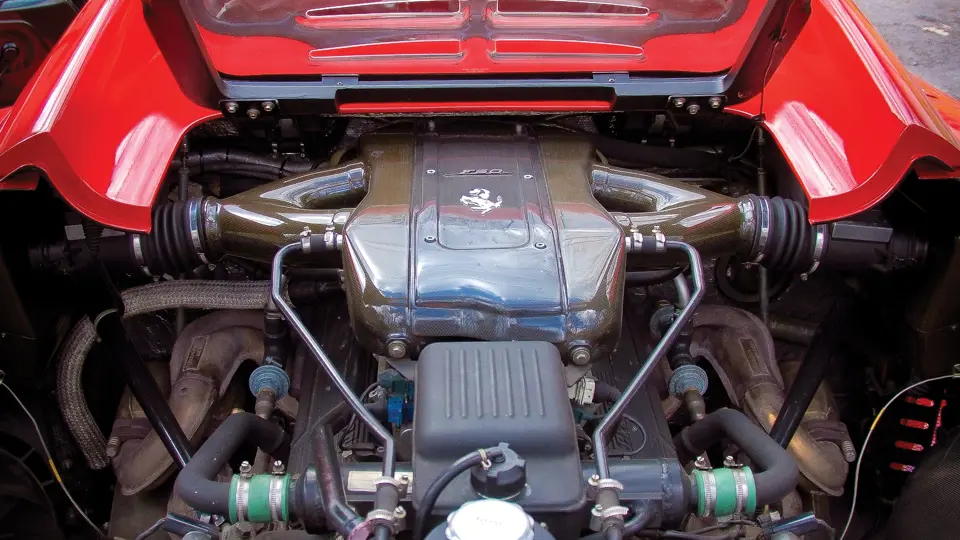


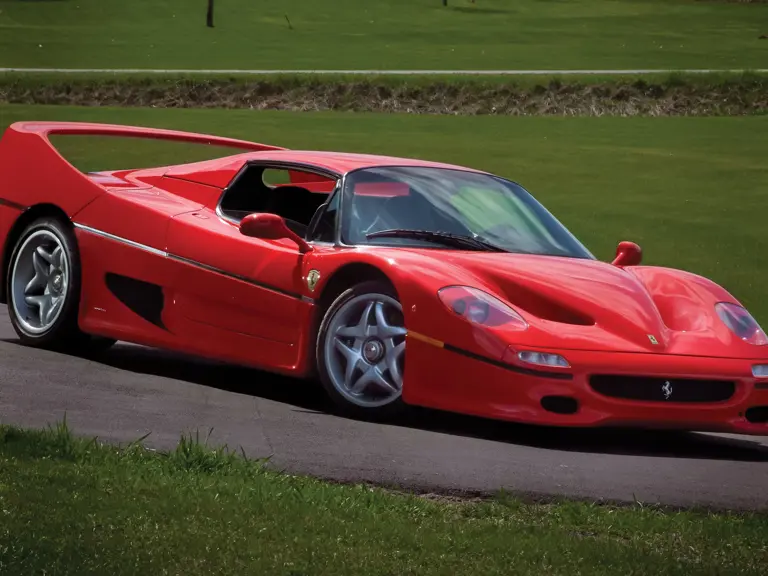
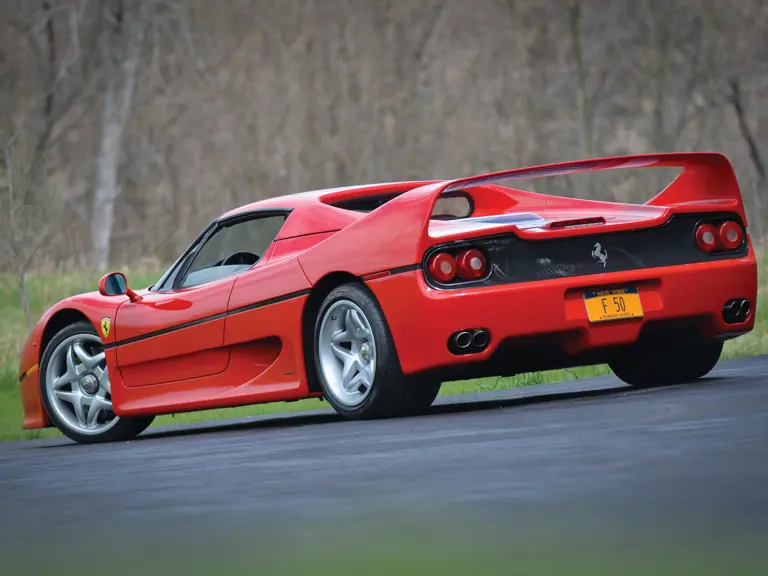
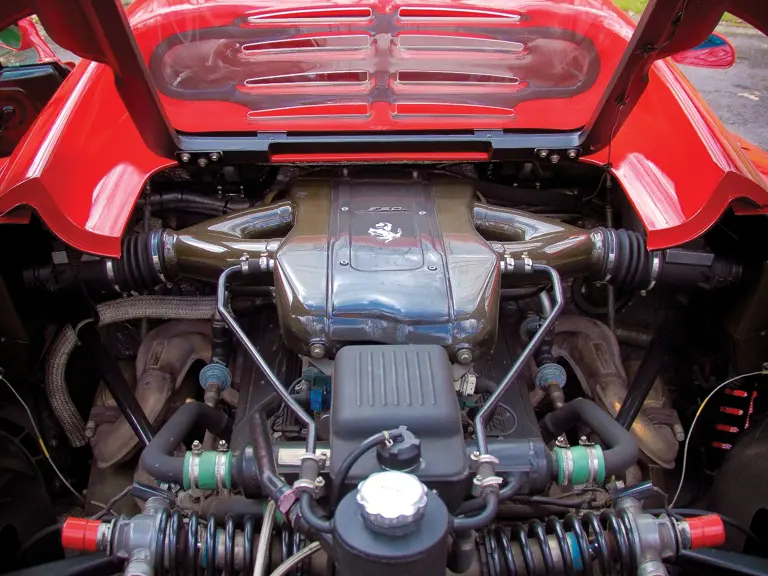
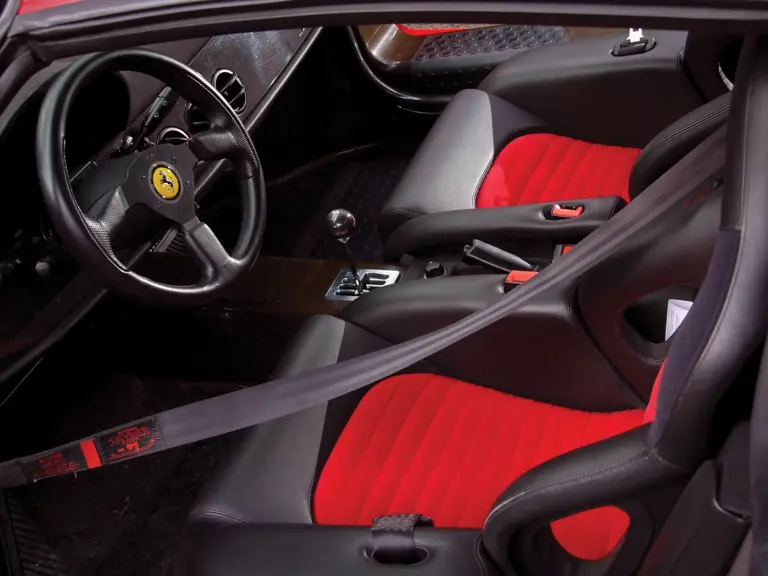
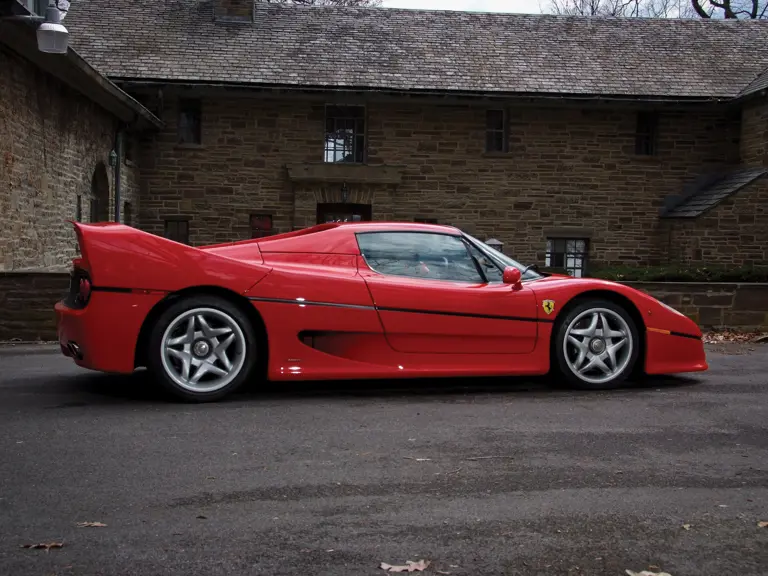
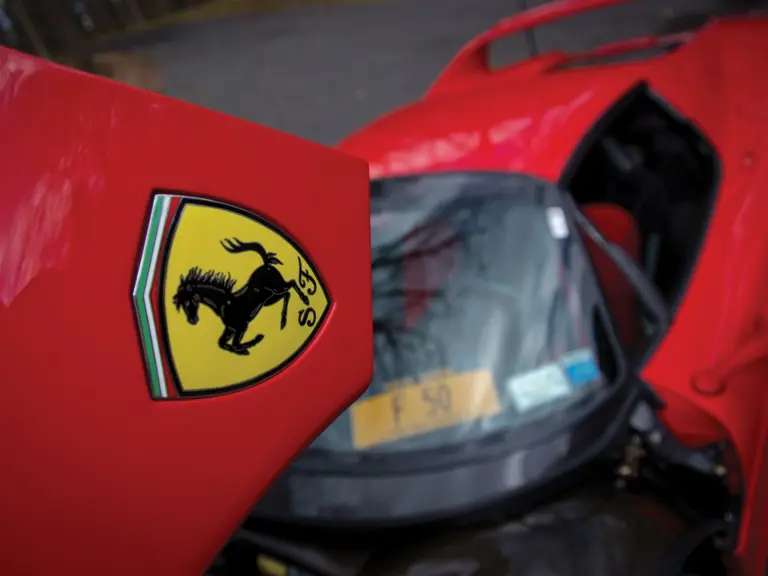
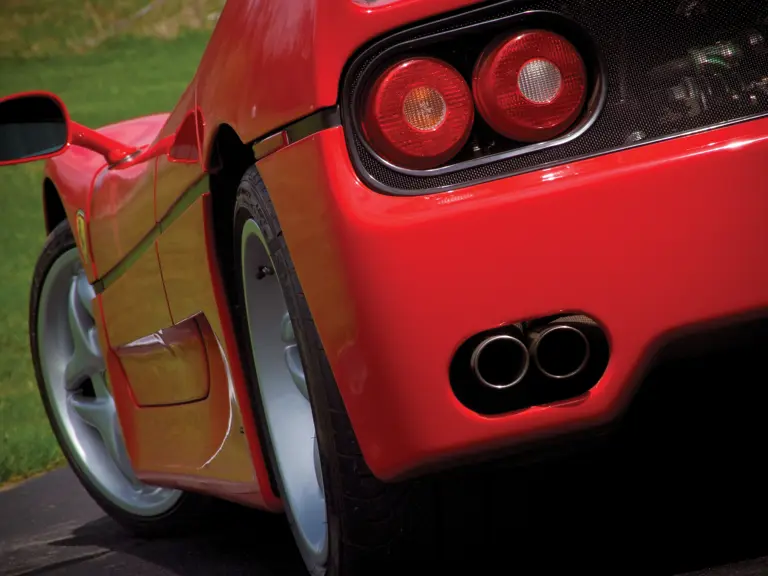
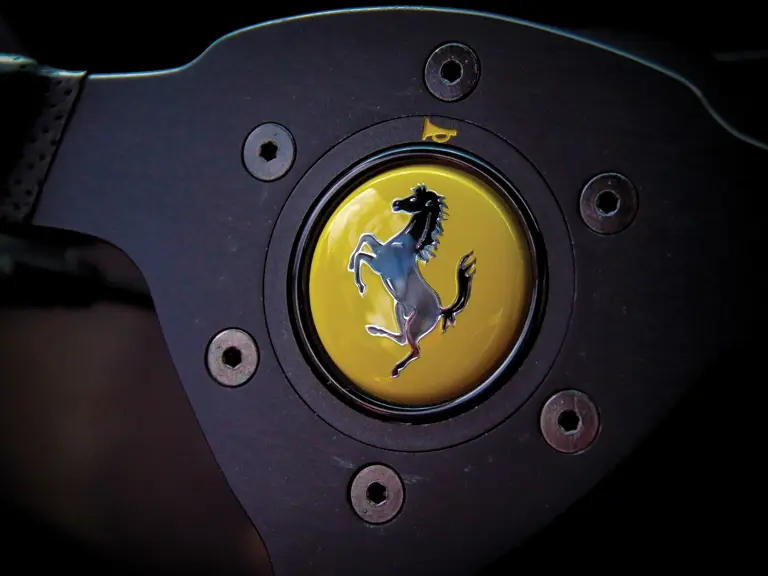
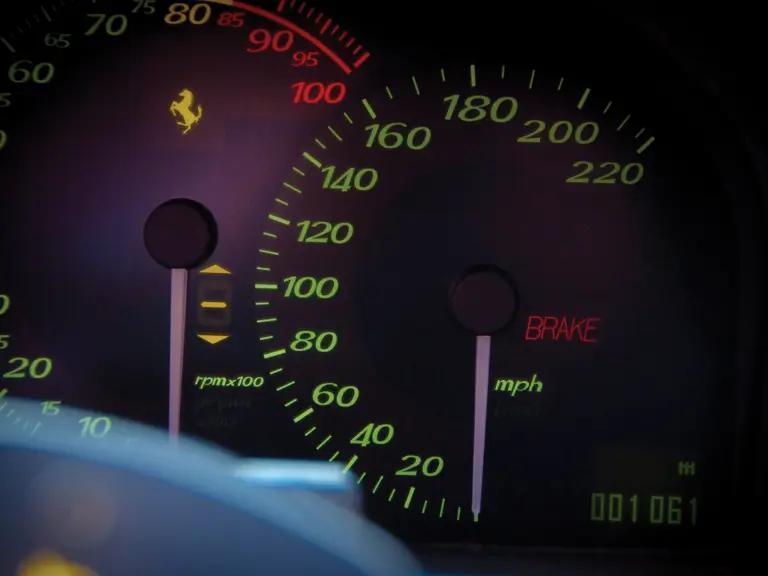
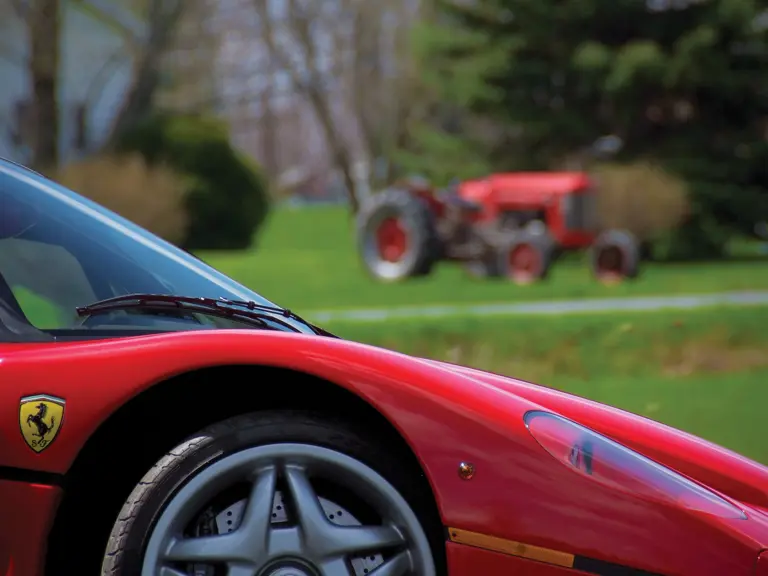
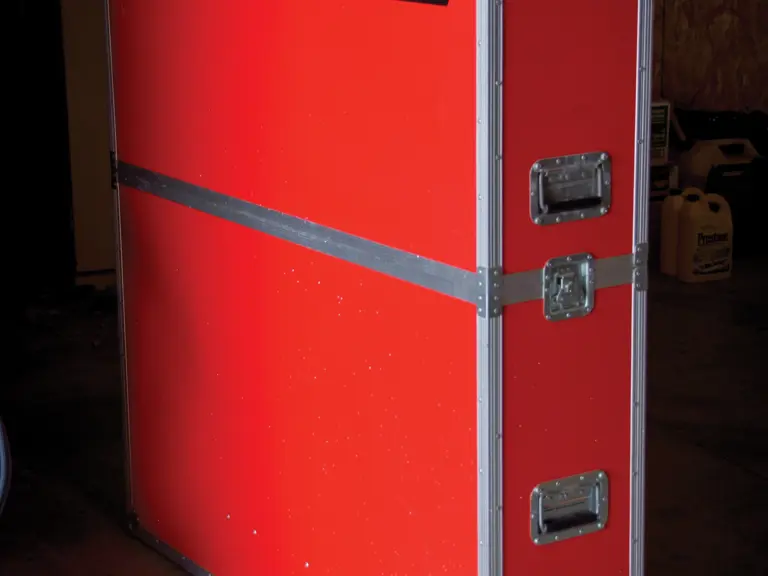


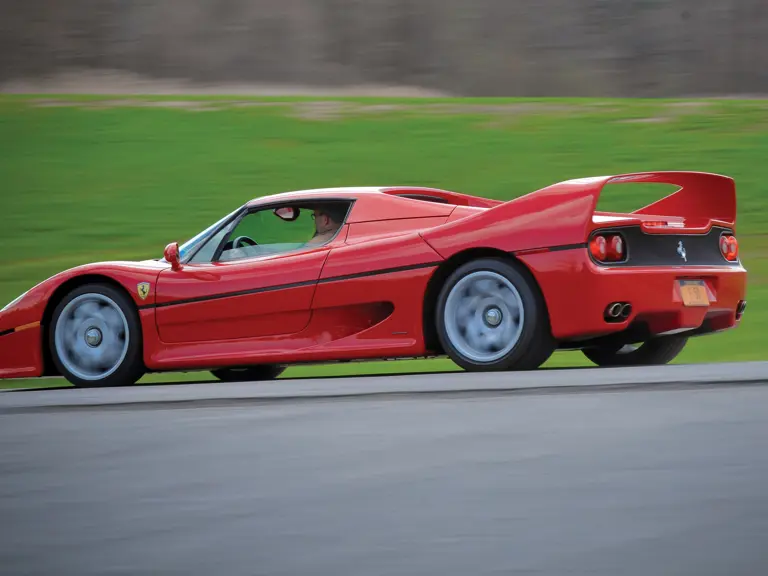
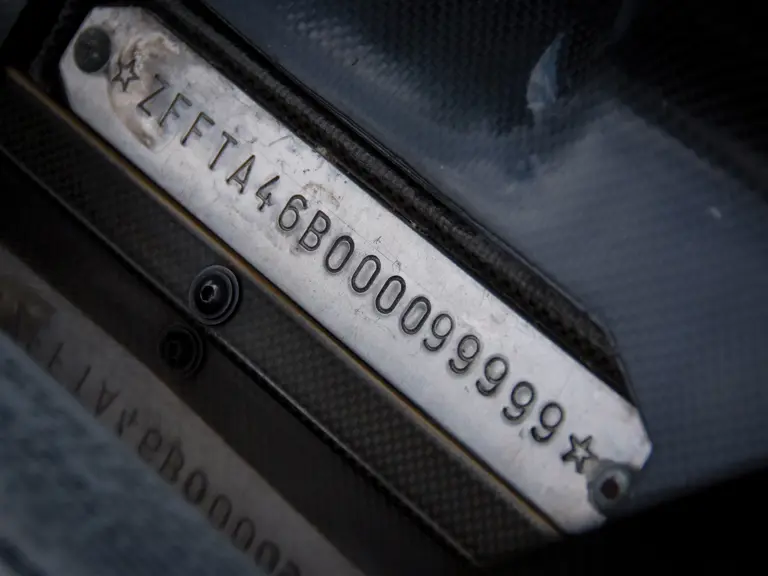

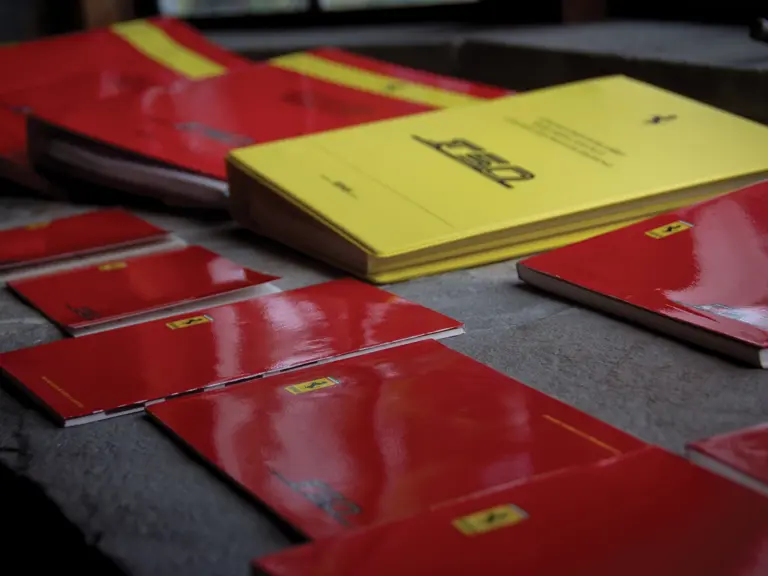
 | Monterey, California
| Monterey, California

